The semiconductor market, a cornerstone of modern technology, has experienced exponential growth and evolution. Semiconductors are essential components in electronic devices, enabling advancements in computing, communication, and automation. This article delves into the semiconductor industry’s complexities, examining its technical specifications, applications, benefits, challenges, innovations, and future prospects.
Global Semiconductor Market Revenue Trends from 1987 to 2024
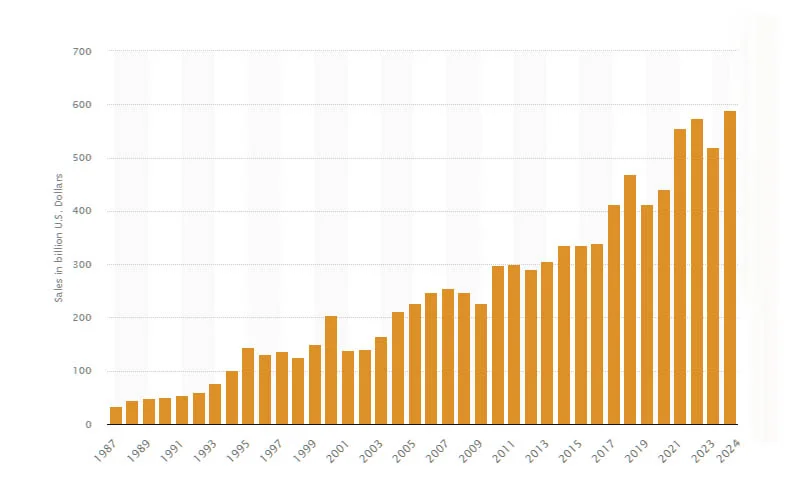
Semiconductor Market: Technical Specifications
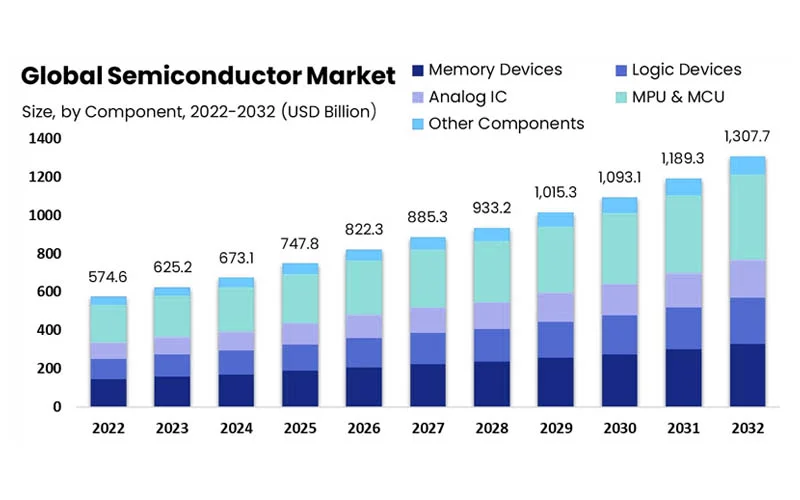
Types of Semiconductors
Semiconductors are classified into several types based on their properties and applications:
- Intrinsic Semiconductors: Pure semiconductors without impurities.
- Extrinsic Semiconductors: Doped semiconductors, including n-type and p-type.
- Compound Semiconductors: Composed of two or more elements, e.g., Gallium Arsenide (GaAs).
Semiconductor Materials
Key materials used in semiconductor manufacturing include:
- Silicon (Si): The most commonly used material.
- Germanium (Ge): Used in high-speed devices.
- Gallium Arsenide (GaAs): Offers superior electron mobility.
- Silicon Carbide (SiC): Used in high-temperature applications.
- Graphene: An emerging material with exceptional properties.
Semiconductor Market: Status of the Global Supply Chain in 2024
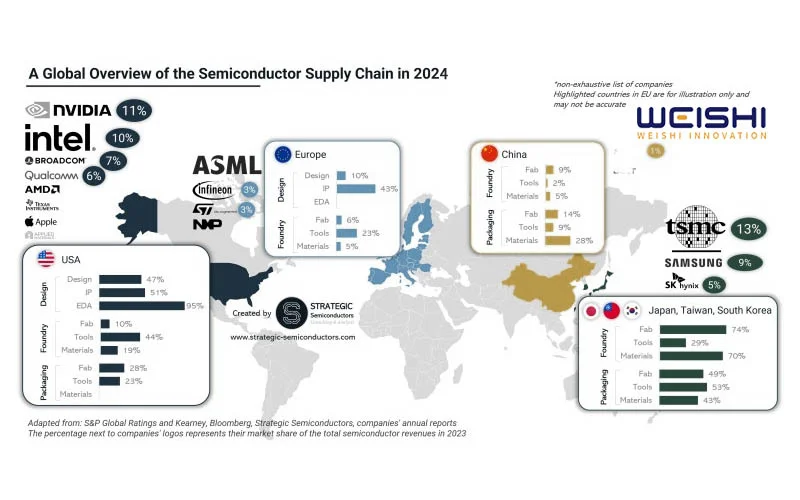
The Covid-19 epidemic and ongoing trade disputes have brought attention to the semiconductor supply chain’s weaknesses, leading to chip shortages and production disruptions in a number of different businesses. Governments and business leaders are looking into methods to make the global supply chain more secure and resilient as the demand for semiconductors rises. This entails expanding stakeholder collaboration, investing in indigenous chip manufacturing capabilities, and diversifying production locations.
Applications Insights
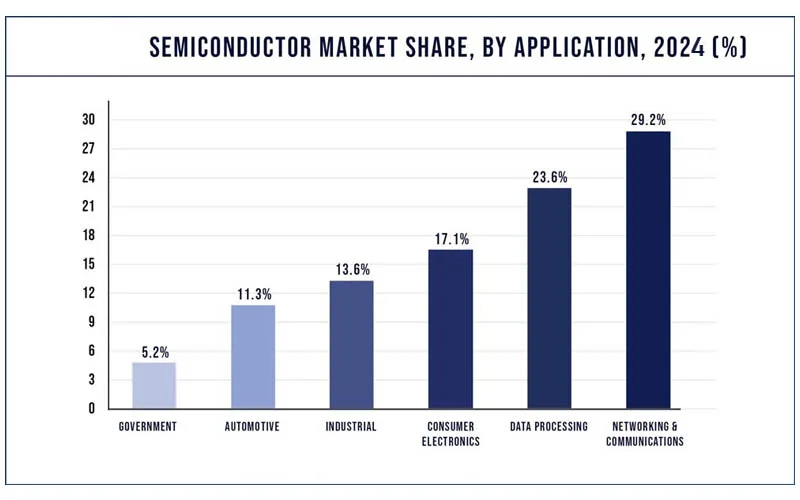
Consumer Electronics
Application-wise, the networking and communications sector held about 29.2% of the market in 2024 and is expected to continue to hold a leading position during the forecast period. This is explained by the growing global adoption of smartphones and other smart gadgets. Roughly 4 billion people worldwide have access to the Internet, and the majority of them do so via cell phones, according to the ITU. This number is further expected to rise and hence it will augment the growth of this segment exponentially in the forthcoming years.
Semiconductors are integral to devices like smartphones, laptops, and televisions, enhancing performance and enabling new features.
Automotive Industry
In vehicles, semiconductors are used in:
- Engine Control Units (ECUs): Improving efficiency and emissions.
- Advanced Driver Assistance Systems (ADAS): Enhancing safety and automation.
- Electric Vehicles (EVs): Power management and battery control.
Telecommunications
Semiconductors power communication devices and infrastructure, enabling high-speed data transmission and connectivity.
Industrial Automation
In industrial settings, semiconductors are crucial for:
- Robotics: Precision control and operation.
- IoT Devices: Monitoring and automation of processes.
Healthcare
Medical devices and diagnostic equipment rely on semiconductors for accurate and reliable performance.
Benefits
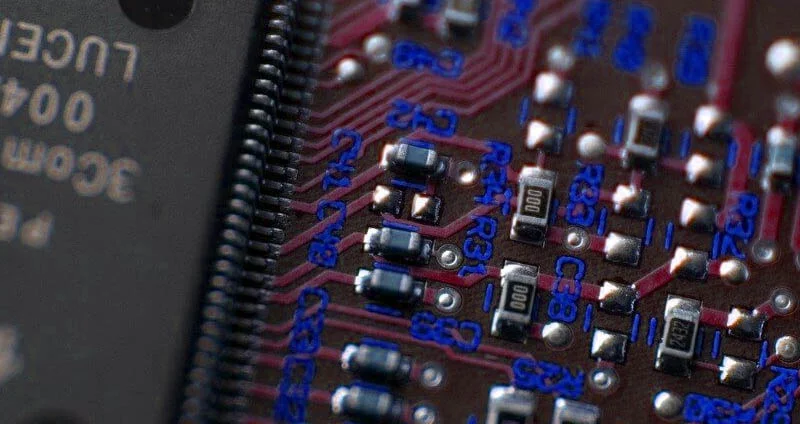
Enhanced Performance
Semiconductors have revolutionized electronic performance, making devices faster, more efficient, and capable of handling complex tasks.
Miniaturization
Advancements in semiconductor technology have enabled the miniaturization of electronic components, leading to more compact and portable devices.
Energy Efficiency
Modern semiconductors are designed to consume less power, contributing to energy conservation and longer battery life in portable devices.
Cost Reduction
Mass production and technological advancements have lowered the cost of semiconductors, making advanced electronics more accessible.
Challenges and Limitations
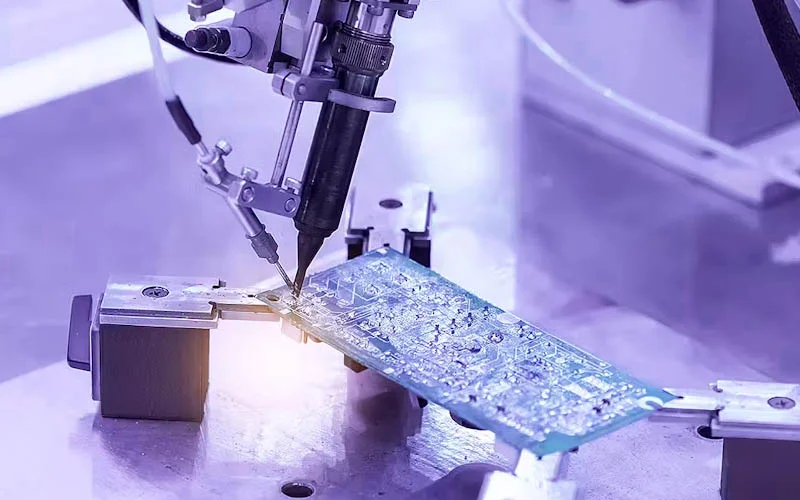
Supply Chain Disruptions
The semiconductor industry is vulnerable to supply chain issues, which can lead to shortages and production delays.
High Manufacturing Costs
Developing and manufacturing semiconductors requires significant investment in technology and infrastructure.
Technological Complexity
As semiconductors become more advanced, the complexity of design and production increases, requiring specialized expertise.
Environmental Impact
The manufacturing process of semiconductors involves hazardous chemicals and significant energy consumption, raising environmental concerns.
Latest Innovations
5nm and Smaller Nodes
The industry is pushing the limits of miniaturization with the development of 5nm and smaller nodes, enhancing performance and efficiency.
Quantum Computing
Semiconductors are at the heart of quantum computers, which promise unprecedented computational power.
AI and Machine Learning
Semiconductor advancements are driving AI and machine learning, enabling faster processing and more sophisticated algorithms.
Flexible Electronics
Flexible semiconductors are enabling new applications in wearable technology and flexible displays.
Future Prospects
Continued Miniaturization
The trend towards smaller, more efficient semiconductors will continue, driving innovation in various fields.
Increased Integration
Semiconductors will become more integrated into everyday objects, leading to smarter and more connected devices.
Sustainable Practices
The industry will focus on sustainable manufacturing practices to reduce environmental impact.
Global Expansion
Emerging markets will play a significant role in the growth of the semiconductor industry, leading to increased global production and innovation.
Comparative Analysis
Semiconductors vs. Superconductors

- Semiconductors: Operate at room temperature and are used in everyday electronics.
- Superconductors: Require very low temperatures, used in specialized applications like MRI machines and quantum computers.
Silicon vs. Gallium Arsenide
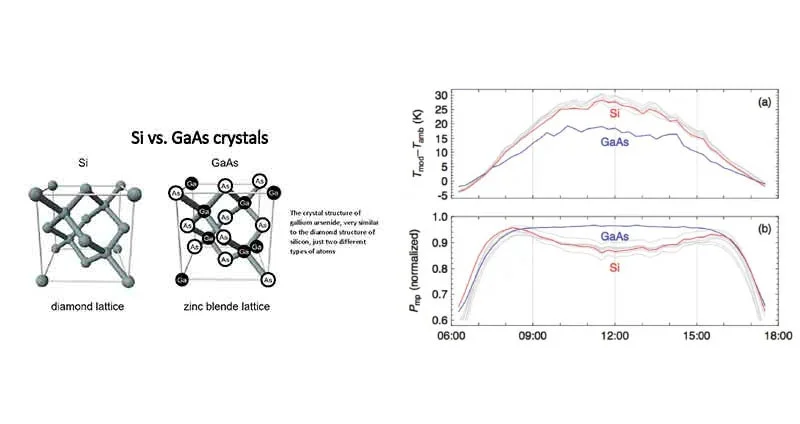
- Silicon: Widely used, cost-effective, and good for general applications.
- Gallium Arsenide: Higher performance, used in high-frequency and high-power applications.
Traditional vs. Flexible Semiconductors
- Traditional Semiconductors: Rigid, used in conventional devices.
- Flexible Semiconductors: Bendable, enabling new applications in wearables and flexible screens.
Global Semiconductor Market Share by Country
India semiconductor market, us semiconductor market, China semiconductor market, European semiconductor market, Comparison.
| Region | Key Drivers | Challenges | Major Players | Market Size (2023) | Growth Forecast |
|---|---|---|---|---|---|
| India | Government initiatives, consumer electronics demand, automotive sector | Infrastructure gaps, skilled workforce shortage | Wipro, TATA Electronics, HCL Technologies | $15 billion | High |
| US | Advanced R&D, strong ecosystem, government support | Trade tensions, high manufacturing costs | Intel, Qualcomm, NVIDIA | $250 billion | Moderate |
| China | Government investment, large consumer market, strategic importance | Technological gaps, geopolitical risks | SMIC, HiSilicon, Yangtze Memory Technologies | $180 billion | Very High |
| Europe | Strong automotive industry, innovation in AI and IoT, EU policies | Dependency on imports, investment needs | Infineon, STMicroelectronics, NXP | $60 billion | Modera |
FAQs
What are Semiconductors?
Semiconductors are materials with electrical conductivity between that of conductors and insulators, essential for electronic devices and systems.
Why are Semiconductors Important?
Semiconductors are crucial for modern technology, enabling the functionality of devices such as smartphones, computers, and medical equipment.
How is the Semiconductor Market Evolving?
The semiconductor market is evolving with advancements in technology, increasing applications, and growing demand across various industries.
Conclusion
The semiconductor market is a dynamic and essential part of modern technology, driving innovation and enabling advancements across various industries. Understanding the technical specifications, applications, benefits, challenges, and future prospects of semiconductors is crucial for leveraging their full potential. As the industry continues to evolve, staying informed about the latest developments and best practices will be key to navigating this complex landscape.